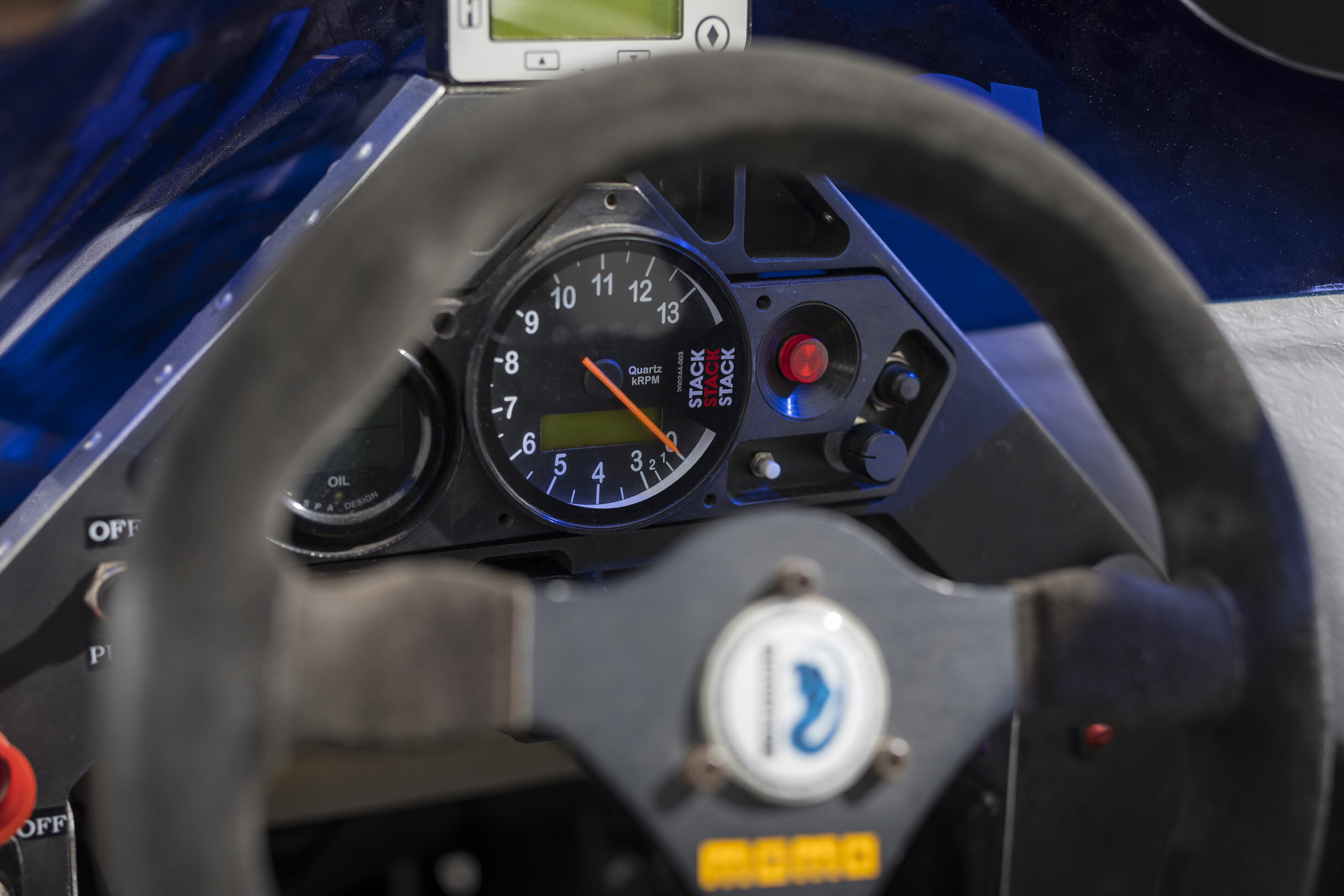The 1982 Brabham BT49D

Every epoch of Grand Prix racing has been graced by magnificent cars which transcended the normal creations of genius and which pushed the boundaries of performance beyond the reach of even their most stellar rivals. Debuted in the autumn of 1979, Gordon Murray’s Brabham BT49 design is regarded by the South African’s peers as the ultimate Cosworth DFV-powered chassis in an extraordinarily competitive era which saw the Ford-badged three-liter V8 engine win 155 Formula 1 World Championship races over an incredible 17 years.
Evolved over four seasons by F1 ringmaster Bernie Ecclestone’s Brabham team, in three distinct specifications, Murray’s family of BT49s were very special in almost every respect. Freed at last from the compromises previously imposed by cumbersome and thirsty 12-cylinder Alfa Romeo engines, in both flat and vee formats, Murray delighted in shrink-wrapping the compact DFV in the neatest, sleekest package. Supremely elegant and stunningly detailed the BT49’s monocoque was beautifully crafted in aluminum with carbon fibre stiffening panels. Setting new standards aerodynamically his masterpieces were quick out of the box and netted six pole positions.
With promising tools at their disposal at last, although the mercurial turbo-cars won the arms race in terms of power, Murray and his lieutenants worked tirelessly to maximize the inherent advantages they had. The team proved most adept at mastering the complex sliding skirt ‘wing car’ concept which unlocked extraordinary new parameters of cornering speed without, on the Brabham at least, sacrificing basic straight line speed. By the end of 1980s the C-spec BT49s were the quickest Cosworth cars, but Piquet’s retirements from the last two rounds – both won by rival Alan Jones in his Williams FW07B – saw the gritty Australian pip him to the championship.
Seventeen examples, nine BT49s, five BT49Cs and three BT49Ds (number 13 was not allocated) were built at Chessington, south-west of London. Brazilian Nelson Piquet – who had made his F1 debut in a low-rent Ensign in 1978, the year he won the British F3 championship in a Ralt RT1 (penned by the brilliant Ron Tauranac, co-founder in 1961 of the Brabham marque with then double F1 world champion Jack Brabham) – scored all but one of the BT49s’ seven Grand Prix victories, landing the first of his three World Drivers’ Championships in them in 1981.
In an incredibly tight season set against a backdrop of bitter controversy as sliding skirts had been banned – spawning active hydraulic ride-height optimizing set-ups demanding minimal suspension travel which placed massive physical stresses on both chassis and drivers – the top seven all won races as sizzling 1500cc turbo cars really began to show their teeth. Working with a bizarre scoring system, Piquet pipped Williams’ Carlos Reutemann by a point, with defending champion Jones (Williams), Jacques Laffite (Ligier) and Alan Prost (Renault turbo) also within one maximum score of the crown!
Brabham joined the forced-induction set in 1982, entering a partnership with BMW to run its ferocious but initially fragile four-cylinder engines in BT50s, but it is a mark of the ever-competitive team boss Ecclestone that he sanctioned production of three new Cosworth-powered BT49Ds, with pared-down tubs permitting lower-line bodywork, as stopgaps for Piquet and Riccardo Patrese to race while the prodigious German horsepower was tamed and made reliable by engineers in Munich. Indeed, torque trumped turbos on the streets of Monaco where the Italian won in chassis 17.
The team’s BMW teething problems continued next time out at Detroit, where Piquet failed to qualify, and Patrese crashed out of the tragic race in which Ricardo Paletti lost his life. Undeterred, the Brabham team regrouped for the Canadian GP at Montreal, building up a brand new BT49D – chassis 18, the last of the noble line – for Riccardo. A week after the abject despair of ‘Motown’ Nelson and Riccardo scored a resounding 1-2 finish, Piquet’s first for BMW in F1. It was all turbo thereafter.
Widely regarded as the most beautiful cars of Formula 1’s charismatic, colorful and ultra-competitive late ‘Cosworth’ era, Brabham’s glorious BT49s are deservedly icons of the sport, and will therefore always be aspirational. The rarest D-spec evolutions are the ultimate expressions of design legend Gordon Murray’s winning theme.
COURTESY OF Fiskens Ltd. London










